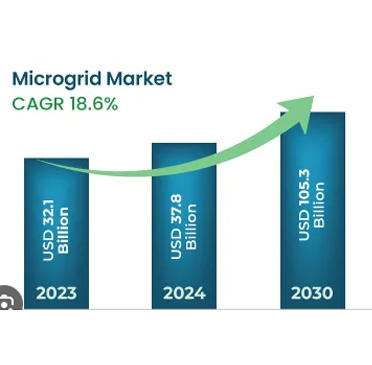-
Address:
294 Brokaw Road, Santa Clara, CA 95050 USA.
-
Mail us:
admin@eiqenergy.com
- CONTACT US

Feasibility Analysis
Once the basic parameters are established, resources and constraints are examined and compared to the budget to determine the project’s viabilty. Constraints can include local code requirements, environmental conditions or budget.
- Budget
- Resources
- Constraints
Grid Tied:
These systems are connected to the utility grid and operate in coordination with it. Power can flow bidirectionally between the microgrid and the utility grid. When the grid becomes unavailable, the microgrid may be able to island itself and continue to provide power to the site. To improve ROI, these microgrids can provide grid support during peak demand, especially at the grid edge. And, renewable energy sources within the microgrid reduce operating costs. Typically, they are larger systems serving campus or industrial sized sites.
-
Focus on Resilience and Reliability
Clean Energy Transition: The global push towards decarbonization and the integration of renewable energy sources, such as solar PV and wind, is accelerating the adoption of microgrids..
-
Integration of Renewable Energy:
Efficient Integration: Microgrids play a vital role in effectively incorporating intermittent renewable energy sources into the grid, improving stability and sustainability.
-
Technological Advancements:
Critical Infrastructure Needs: Microgrids are particularly attractive for critical infrastructure like hospitals, data centers, and military bases, which require uninterrupted power supply.

Usefull Topics:
Utility outages are growing more prolonged and frequent in many areas, often caused by weather-related disasters and aging infrastructure. A microgrid enables your organization to remain powered by seamlessly switching to on-site generation or storage. If the grid fails, a microgrid controller can sense the disruption, disconnects from the utility, activates “island mode,” and reconnects when the utility service is restored..
A microgrid provides the technical infrastructure to pilot, integrate, and scale renewable energy systems in lieu of or to balance out non-renewable sources from the grid at your own pace. With the right software, controller, and interconnection equipment, the microgrid can use renewable sources, including battery storage, to supply your needs and could enable providing decarbonized power through a utility to other users.
An intelligent microgrid controller determines the optimal times to consume, produce, store, or sell energy based on weather, predicted utility rates, and other factors. It allows you to use your own loads without paying peak rates from the utility and the option to sell excess power when available. A microgrid can be a long-term hedge against inflation as the cost of fossil-fuel utility plants increases relative to renewable sources.
A tale of a fateful trip that started from this tropic port aboard this tiny ship today still wanted by the govern ment they survive as soldiers of fortune to a deluxe you apartment that this group would somehow form a apartment in the sky moving on up to the east side a family to explore strange new worlds.
EaaS is a business model that lets your organization reap the benefits of microgrid ownership without the cost and risk of capital investment. With EaaS, partners like Schneider Electric, through their Joint Ventures with AlphaStruxure, GreenStruxure, and GreenNext, build, own, and operate a microgrid at your site for a long-term price per kWh. This gets the microgrid up and running faster and protects you from utility rate hikes. Schneider Electric can even transfer the asset to a partner when necessary, reducing your financial risk.
Reliable Market Growth:

The microgrid market is experiencing robust growth, driven by increasing demand for reliable and resilient power systems, particularly in the face of extreme weather events and aging grid infrastructure. The market is projected to reach $163.17 billion by 2033, with a compound annual growth rate (CAGR) of 16.37% from 2025 to 2033
- Increased demand for reliable power:
- Integration of renewable energy:
- Technological advancements:
- Growth in electrification and smart grids:
- Government policies and incentives:
